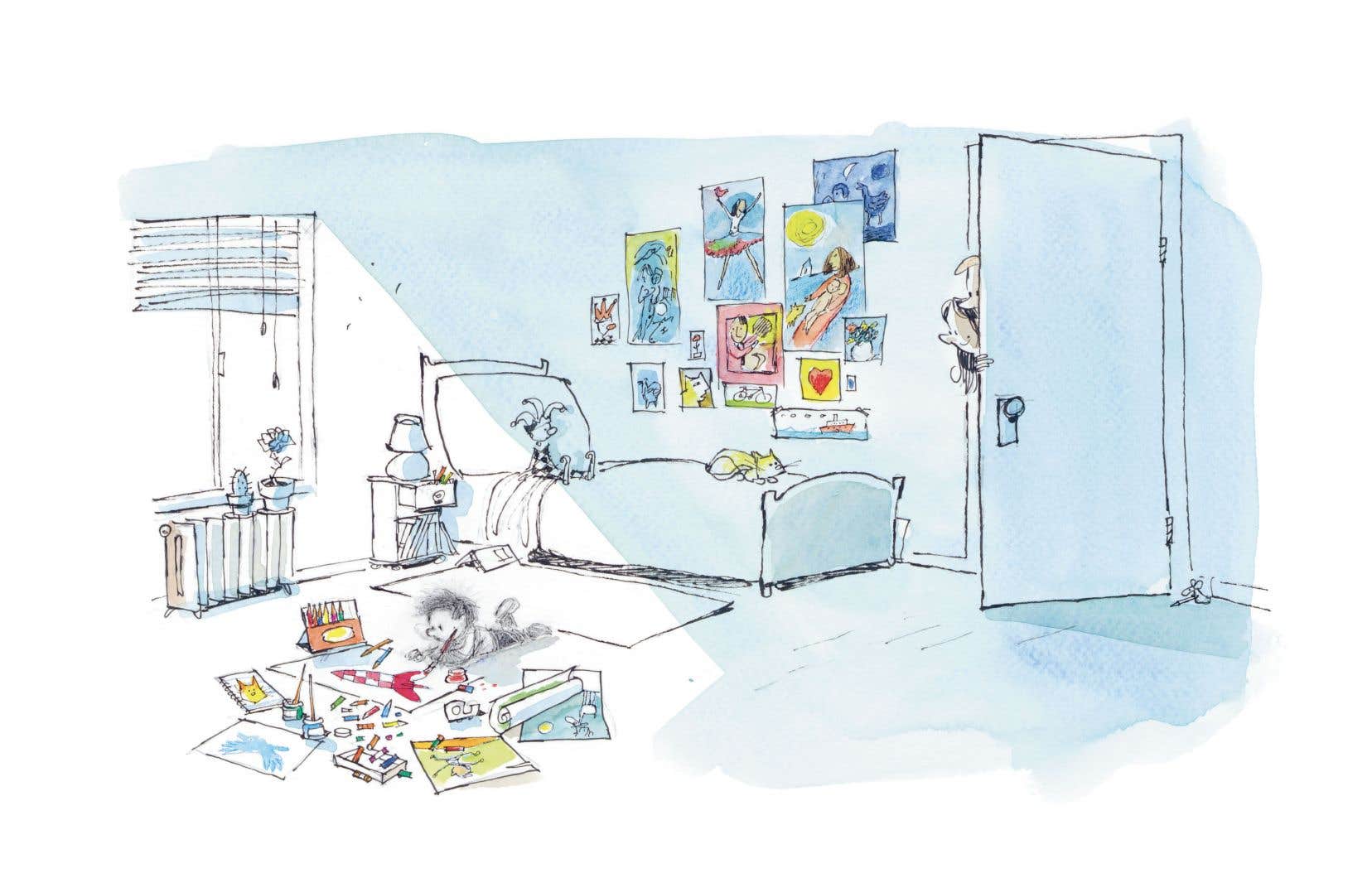My crust
“Yesterday I fell. I tripped on a rock and PAF […] Dad cleaned my wound and said, “You’ll have a nice scab soon.” I got the crust, but it wasn’t pretty. Little by little, it cooked on my knee. It looked like a hamburger, but not an edible one. ” In Bertha and I, Beatrice Alemagna tells from the inside the relationship that a little girl has with Bertha, the scab that forms on her scratch. The story told by the little one is interspersed with some tasty dialogues, notably with said scab, who does not appreciate the name “old grandmother” given to her by her owner. In a series of paintings that are as colorful as they are evocative of childhood, Alemaga manages to convey the importance of these little worries. Sitting, standing or contorted to observe Bertha’s transformation, the little girl sports flamboyant hair, the same Pantone orange as her injury. A lively bond of friendship is created, which later finds an echo in a field of poppies, symbol of memory, where she places the remains of her fallen crust. Gorgeous.
Marie Fradette
Bertha and I
★★★★1/2
Beatrice Alemagna, The School of Leisure, Paris, 2024, 48 pages. From 6 years old.
The wall
When winter sets in, the amusement park is taken over by animals. Foxes, deer, badgers and other wild animals enjoy the place until humans return in spring. Only the bear takes up residence, scaring off the humans, who decide to build a wall between the city and the bear. Ode to rewilding, On the edge also carries the hope of a better life together. The omnipresence of humans in the formerly wild habitat is evoked here with as much delicacy as lightness, allowing us to reflect on the importance of our choices. The bear who takes over the toilets also highlights this strange meeting between the two worlds. In this album of few words, Nina Neuray’s illustration alternates between full pages, reflecting the scale of the occupied territory, then a few sequential images which tell, without words, the journey of the animals. The artist’s realistic style is combined with some humorous effects, notably expressive looks which play down the situation while allowing us to grasp its seriousness.
Marie Fradette
On the edge
★★★★
Nina Neuray, Éditions La Parti, Paris, 2024, 36 pages. From 3 years.
Trace your path
The latest proposal from the tireless Jacques Goldstyn invites us to meet the young Croki, born in a world “where people and geese walked in step” in a town with houses “all identical and streets laid out in a straight line”. Croki “was not drawn like everyone else”. Singular, original and distracted by a tendency to embellish the dull everyday life, he is disturbing. Fortunately, the love of his parents is joined by that of a few allies, starting with his accomplices, with whom he “inks” and makes “all 400 strokes of the pencil”. While the story is a little heard, its language is playful, skilfully iridescent by the lexical field of the drawing. A snub to the conservative forces that seek to erase difference and a tribute to the creative souls irrigating the world with their imagination, Croki is a joyful song, carried by Goldstyn’s illustrations, instantly recognizable, whose precise and fine lines are bathed in the nuanced hues of his watercolors. “The world needs us!” » proclaims Croki.
Yannick Marcoux
Croki
★★★1/2
Jacques Goldstyn, La Pastèque, Montreal, 2024, 80 pages. From 6 years old.
survival letter
The first collection of poetry by Lauriane Charbonneau (Forget yourself on the street corner2023) allowed us to discover a loose voice that pursues an emancipatory desire. To do list for sad days, this time intended for a young audience, brings us back to this hammered language, full of benevolence but voluntary, to the truths which illuminate painful darkness. The collection takes the form of a 41-point list where the author strives to restore the taste for living to a friend who has lost the strength: “I decide that you do not have the right to leave. » Formulated in the second person, the injunction of the imperative will not be unanimous. In the flow of these vital prescriptions, we sometimes lose sight of the thread that holds the whole together and, then, even embodied, even illustrated, the language struggles to distinguish itself from a medical prescription. However, beautiful flights take us to the guts: “I will make your cry a fire and we will throw into this fire all those times when we swallowed our words. » We don’t always know where this book belongs, but we readily forgive its mistakes, since it is likely to save lives.
Yannick Marcoux
To do list for sad days
★★★
Lauriane Charbonneau, La Bagnole “Fuwa Fuwa”, Montreal, 2024, 138 pages. From 14 years old.
